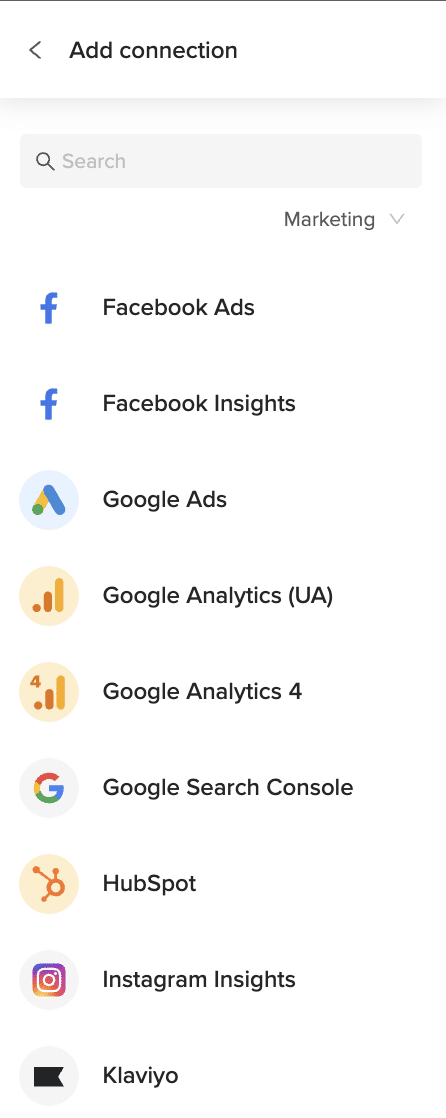Importing Mailchimp Automations into Excel lets you monitor automated workflows and their metrics side-by-side. This guide shows how to connect Coefficient and load your automation data.
TLDR
-
Step 1:
Install Coefficient in Excel and authenticate Mailchimp.
-
Step 2:
Import “Automations” via “Import from Objects.”
-
Step 3:
Optionally schedule auto-refresh for continuous updates.
Step 1: Installation and Connection
In Excel, click Insert › Get Add-ins › search “Coefficient” › Install. Open the sidebar and sign in to Mailchimp.

Step 2: Import Automations Data
Select “Import from Objects,” choose “Automations,” then click “Import.” Workflow details and metrics will fill the sheet.

Step 3: (Optional) Set Up Auto-Refresh
Click “Refresh” › “Schedule” in Coefficient. Select your frequency—Coefficient keeps automation data in sync.

Available Mailchimp Objects
- Audience
- Campaigns
- Audience Activity
- Audience Growth History
- Audience Locations
- Audience Segments
- List of Audiences
- Conversations
- Contact List
- Reports
- Audience Clients
- Audience Interest Categories
- Audience Webhooks
- Automations
- Connected Sites
How to Import Audience Webhooks Data from Mailchimp into Excel
Importing Mailchimp Audience Webhooks into Excel lets you monitor subscriber events like subscribes and unsubscribes in real time. This guide shows how to connect Coefficient and load webhook data.
TLDR
-
Step 1:
Install Coefficient and authenticate Mailchimp in Excel.
-
Step 2:
Import “Audience Webhooks” via “Import from Objects.”
-
Step 3:
Optionally schedule auto-refresh for live event updates.
Step 1: Installation and Connection
In Excel, click Insert › Get Add-ins › search “Coefficient” › Install. Launch the sidebar and sign in to Mailchimp.

Step 2: Import Audience Webhooks Data
Select “Import from Objects,” choose “Audience Webhooks,” then click “Import.” Webhook event records will fill the sheet.

Step 3: (Optional) Set Up Auto-Refresh
Click “Refresh” › “Schedule” in Coefficient. Pick your cadence—Coefficient keeps webhook events up to date automatically.

Available Mailchimp Objects
- Audience
- Campaigns
- Audience Activity
- Audience Growth History
- Audience Locations
- Audience Segments
- List of Audiences
- Conversations
- Contact List
- Reports
- Audience Clients
- Audience Interest Categories
- Audience Webhooks
- Automations
- Connected Sites
How to Import Campaigns Data from Mailchimp into Excel
Importing Mailchimp Campaigns into Excel lets you compare open, click, and send metrics side-by-side. This tutorial shows how to connect Coefficient and load your Campaigns object quickly.
TLDR
-
Step 1:
Install Coefficient in Excel and authenticate Mailchimp.
-
Step 2:
Import “Campaigns” via “Import from Objects.”
-
Step 3:
Optionally schedule auto-refresh for continuous updates.
Step 1: Installation and Connection
In Excel, go to Insert › Get Add-ins › search “Coefficient” › Install. Open the Coefficient pane and log in to Mailchimp.

Step 2: Import Campaigns Data
Select “Import from Objects,” choose “Campaigns,” then click “Import.” Your campaign list will appear in the sheet.

Step 3: (Optional) Set Up Auto-Refresh
Click “Refresh” › “Schedule” in Coefficient, then select daily, hourly, or custom frequency. Coefficient updates your data automatically.

Available Mailchimp Objects
- Audience
- Campaigns
- Audience Activity
- Audience Growth History
- Audience Locations
- Audience Segments
- List of Audiences
- Conversations
- Contact List
- Reports
- Audience Clients
- Audience Interest Categories
- Audience Webhooks
- Automations
- Connected Sites
How to Import Connected Sites Data from Mailchimp into Excel
Importing your Mailchimp Connected Sites into Excel lets you track website integrations and visitor data in one place. In this guide, you’ll connect Coefficient and import site records.
TLDR
-
Step 1:
Install Coefficient in Excel and authenticate Mailchimp.
-
Step 2:
Import “Connected Sites” via “Import from Objects.”
-
Step 3:
Optionally schedule auto-refresh for live sync.
Step 1: Installation and Connection
In Excel, click Insert › Get Add-ins › search “Coefficient” › Install. Launch the sidebar and sign in to Mailchimp.

Step 2: Import Connected Sites Data
Select “Import from Objects,” choose “Connected Sites,” then click “Import.” Your site integration records will populate the sheet.

Step 3: (Optional) Set Up Auto-Refresh
Click “Refresh” › “Schedule” in Coefficient. Choose a cadence—daily, hourly—to keep your connected sites data fresh.

Available Mailchimp Objects
- Audience
- Campaigns
- Audience Activity
- Audience Growth History
- Audience Locations
- Audience Segments
- List of Audiences
- Conversations
- Contact List
- Reports
- Audience Clients
- Audience Interest Categories
- Audience Webhooks
- Automations
- Connected Sites